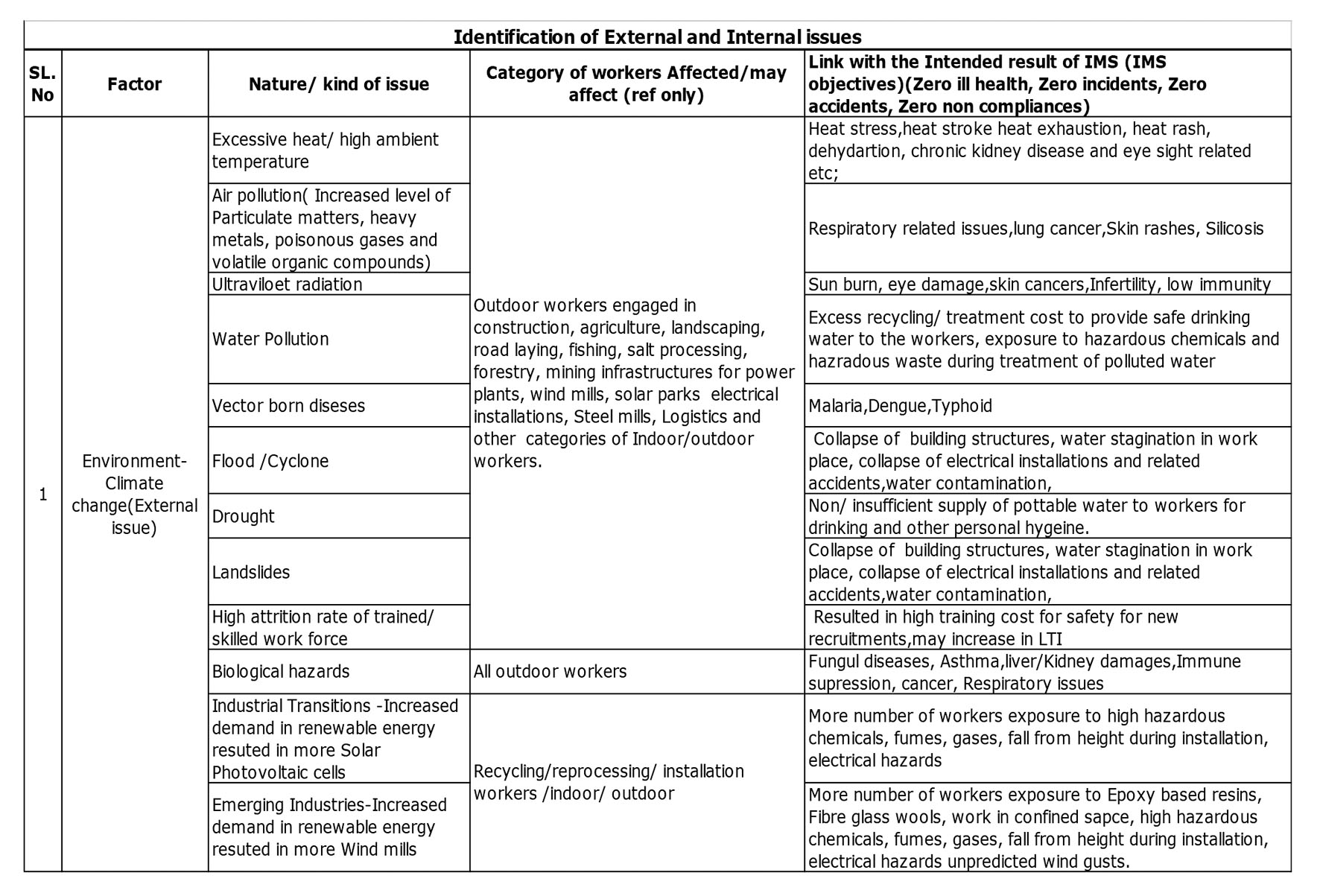
Impact of climate change considerations on ISO 45001
Progress indicator

IRCA Principal Auditor Ravindiran Gurusamy takes a closer look at the impact of ISO’s climate change amendment on ISO 45001 when considering an occupational health and safety management system.
ISO’s London Declaration, approved in September 2021, represented a significant push from the organisation to transform the global approach to climate action and advance international work to achieve net-zero goals.
This game-changing agreement promised to not only embed key climate considerations into every new standard created by ISO, but also add those requirements to all existing standards as they are revised.
In the first phase earlier this year, ISO amended 31 Type A management system standards to include climate change considerations. This article explains how an organisation can conform to the requirements of ISO 45001:2018 Occupational health and safety management system – Requirements with guidance for use, in line with this climate change consideration amendment.
What has changed?
The amendments to ISO 45001 (and the other 30 management standards) are shown below in italics:
Clause 4.1 Understanding the organization and its context.
Added: The organization shall determine whether climate change is a relevant issue.
Clause 4.2 Understanding the needs and expectations of interested parties.
Added: Note: Relevant interested parties can have requirements related to climate change.
The overall intent of clauses 4.1 and 4.2 remains unchanged, but these new inclusions are to ensure organisations pay special attention to climate change as one of the external issues to be considered in the design and implementation of their occupational health and safety management system (OHSMS).
Climate and weather patterns are changing and as a result occupational hazards and related risks on workers are increasing. Determining how all workers are at variable risks and adverse effects is essential for implementing preventive measures. OHSMS-certified organisations should therefore take into account and implement the amendments to demonstrate their commitment to protecting their workers from the effects of climate change.
Impact on OHSMS
Many organisations follow PESTLE (political, economic, social, technological, legal and environmental) guidelines to determine the internal and external issues relevant to their OHSMS.
Following ISO’s amendment, an organisation must now determine if climate change is relevant to its OHSMS and ensure consideration of the issue is included in any updates to the OHSMS policy.
"Ensure climate change considerations are at the forefront when reviewing any actions to address occupational risks and opportunities, particularly when reviewing and assessing hazards and associated occupational risks."
Perhaps one of the most pertinent ways in which these considerations can affect an organisation’s OHSMS is in the case of workers who could be affected by climate change. Employees who must regularly work outside are clearly more vulnerable to the effects of climate change in terms of weather conditions.
However, other factors that could affect employees working outside as well as inside include pollution of air and water, and any new skills required because of the introduction at a work site of things such as solar panels or wind turbines.
Organisations can refer to the following table, which identifies some of the issues that may come about due to the effects of climate change.

The table below shows the needs of some of the 'interested parties' in organisations who may be impacted as a result of climate change.

Demonstrating commitment
An organisation’s management can demonstrate commitment towards climate change considerations in its OHSMS in several ways.
- Specific roles can be given the responsibility and authority to communicate the importance of climate change considerations to employees. By ensuring such considerations are a regular item on the organisation’s agenda, all employees can be consulted on how positive changes can be carried out, which can motivate workers to participate in these changes.
- Ensure climate change considerations are at the forefront when reviewing any actions to address occupational risks and opportunities, particularly when reviewing and assessing hazards and associated occupational risks.
- Allocate adequate resources to handle any natural disasters, such as flooding, that may occur because of climate change, and establish an effective internal and external communication system to convey what these resources are. If required, get support from external experts in planning such resources.
- Determine operating criteria and control measures through operational planning and control, and follow the hierarchy controls to mitigate the impact of any occupational risks that could occur because of climate change. These could include planned temporary or permanent changes to the layout or location of the workplace, working conditions, the workforce itself, and procurements, in line with the guidelines or requirements of any relevant statutory or regulatory bodies.
- Review and update the onsite emergency preparedness and response plan to cover any emergencies identified because of climate change. Also periodically test the planned response via a controlled exercise involving all employees.
- Establish key performance indicators (KPIs) for appropriate monitoring and measurement techniques, and analyse the organisation’s outputs against the KPIs to evaluate performance.
- Review the evaluation of compliance in line with the amended legal requirements and, if required, provide awareness training for any internal auditors.
- Keep climate change as one of the agenda points in management review meetings, and identify improvements for eliminating hazards or mitigating the occupational health and safety risks to improve OHSMS performance in addressing the issue of climate change.
Conclusion
Climate change is one of many issues that organisations should consider when identifying the internal and external issues relevant to their OHSMS, taking into account potential impacts on their employees and other interested parties.
Climate change may be an external factor, but it is one of the most important, particularly when it comes to combating occupational risks brought about by the effects of climate change.
Quality World

Get the latest news, interviews and features on quality in our industry leading magazine.



